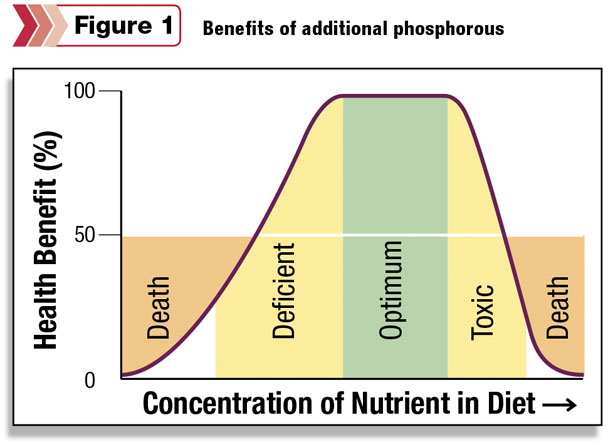Over my veterinary career, I have heard not only producers but also animal scientists and veterinarians repeat statements they have heard somewhere along the road that just aren’t true. Below are the first five of my top 10 beef cow-calf nutrition myths. Click here to read the last five of the top 10 beef cow-calf nutrition myths.
Myth 1
Use caution when feeding cows during gestation because giving them too much feed will increase birthweights.
Fact
It is generally a rare and exceptional set of circumstances by which overfeeding cows will produce calves that are heavier at birth. So, within reasonable limits, don’t worry about calf birthweights when feeding cows during gestation.
An example that illustrates this well is the heifer that has been in the feedlot for the past six months who nobody noticed was pregnant until they saw feet sticking out. Typically, these calves are within the expected range for birthweight for their genetic makeup.
Notes
- It is definitely possible to underfeed cows to the extent that you will get lighter-birthweight, small or weak calves. That is, you can starve them into having weenie calves.
- See Myth #2 regarding the importance of body condition score at calving on reproductive performance – and thus the importance of nutrition during gestation toward maintaining appropriate body condition.
Myth 2
I should feed cows aggressively after calving to achieve a good conception rate.
Slightly different and equally false
I can feed cows aggressively after calving to achieve a good conception rate.
Fact
The benefit of feeding a high-energy ration over a nutritionally adequate ration after calving with respect to reproductive performance is small. The reality is that body condition score (BCS) of the cow on the day she has a calf is the single greatest determinant of how soon after calving she will begin to cycle and therefore how soon after calving she will become pregnant.
The more condition she is carrying on the day of calving, the sooner she’ll become pregnant. Of course, the key here is to optimize rather than maximize body condition.
The threshold for good reproductive performance is generally accepted to be at or above BCS 5 for cows and at or above BCS 6 for heifers. These are minimums, and a bit higher is better, but excessive BCS (8 to 9) should be avoided.
Notes
The reader might be saying: “OK Doc, you say that BCS at calving is so important, but feed is expensive, most of my cows have a pretty good BCS, and some are fat.”
Here is my reply: Body condition scoring is easy to learn and costs nothing. Go out and score your cows after weaning. Once you have the data, then ask yourself these questions:
- Do I have the ability (facilities, time, feed) to make a “thin cow group” and feed them separately prior to calving?
- Is there enough variation in BCS to warrant grouping? That is, do I have enough thin cows to make it worth the effort to feed them separately?
If the answers to the above two questions are “yes,” then listen to the shoe company and just do it.
Further notes
- Remember that it is certainly possible to underfeed cows after calving to the degree that the interval to their first postpartum estrus is extended. That is, you can starve them into not getting pregnant.
- Generally, most of the 2-year-old females that just weaned their first calf would benefit from receiving the thin cow group ration.
- Note that having a thin cow group can also potentially allow you to save some money on feed for the rest of the herd. Of course, beware of trying to save too much money.
- An alternate strategy is to keep all of the cows together and simply allow the thin cows to fail to get pregnant. These cows apparently lack the traits necessary to thrive in your local environment under your style of management. So, allowing them to “self-cull” will, over time, lead to a herd made up of cows that do well under your conditions. Again, however, beware of “allowing” your cows to cull you into bankruptcy.
Myth 3
Phosphorus supplementation above requirement is necessary for good reproductive performance in beef cows. That is: “Extra phosphorus helps them to cycle, Doc.”
Fact
The primary nutrient consideration for optimum reproductive performance in beef cattle is energy. (See Myth #2 regarding the importance of body condition score at calving on reproductive performance.)
Beef cows do have a phosphorus requirement that must be met, but I am not aware of any research showing improved reproductive performance when phosphorus is fed at rates above established requirements.

After a cow’s requirement is met (cow is somewhere in the adequate range), additional phosphorus has no benefit. See Figure 1. The next article with the second half of the top 10 nutrition myths will have more information on mineral supplementation.
Notes
This myth seems to have originated from a 1928 publication out of South Africa in which cows grazing severely phosphorus-deficient pastures benefitted from supplementation.
These cows were so deficient that the mortality rate for the unsupplemented cows was about 50 percent compared with about 7 percent mortality for cows supplemented with phosphorus. Thus a primary finding in this study was that cows must be alive to reproduce.
Myth 4
Creep-feeding will spare cow body condition when summer pasture is short.
Fact
Creep-feeding will enhance calf growth but will not benefit the cow. That is, creep-feeding will not cause the cow to be better able to maintain body condition.
Notes
Consider early weaning instead – removing the additional burden of lactation will spare cow body condition.
Myth 5
Feeding hay is always the best option when summer pasture is short.
Fact
Many commodities may be a cheaper source of calories than purchased hay or feeding your winter hay supply. Depending upon the price in any given year, distillers grains, wheat midds, other byproducts and even sometimes corn may be cheaper than hay.
Notes
- Early weaning removes the calf from the pasture and reduces cow energy requirement – both reduce pressure on the pasture. Furthermore, if you are getting paid on calf weight, then why not put supplement dollars directly into early weaned calves.
If the calves are weaned, then the only reasons to supplement the cows are so they don’t get excessively low in body condition and so they won’t get out into the neighbor’s alfalfa.
- This is another example of a time when grouping and feeding cows based upon body condition score can reduce total supplement cost for the herd.
- If using grain or other concentrate-type feed to supplement energy to cows, then it is very likely this feedstuff will be limit-fed. In this situation, it is critical that the cows have adequate bunk space and that the feed not be delivered until all the cows are at the bunk.
Failure to follow these precautions will lead to the dominant cows getting fatter and the weaker cows getting thinner.
Please be on the lookout for the second five of the Top 10 Beef Cow-Calf Nutrition Myths in next month’s issue.

- Lowell Midla
- Assistant Professor - College of Veterinary Medicine
- Ohio State University








